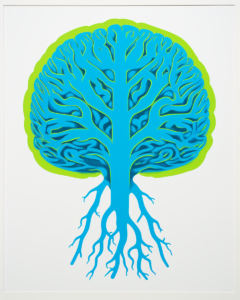Introduction

Habits are the hidden architecture shaping our lives, influencing our actions, feelings, and thoughts in ways we often don’t notice. Although the word ‘habit’ often brings to mind negative behaviors like smoking or procrastinating, it’s important to understand that habits can be both constructive and destructive. They can either hold us back in a cycle of failure or elevate us toward realizing our full potential.
Grasping the nuances of different types of habits isn’t just a psychological endeavor; it’s a blueprint for personal growth. When you get the mechanics of habits down, you equip yourself to break harmful cycles and form empowering new ones. You don’t just go along for the ride; you become the driver, steering your life toward intentional, beneficial actions.
The Mechanics of Habits
Diving right into the mechanics of habits, we’ll explore the concept of the “habit loop,” a cycle comprising three key elements: the cue, the routine, and the reward. A stimulus kicks off the habit, triggering a neural pathway that encourages you to execute a specific pattern. Completing this pattern results in a reward, reinforcing the habit and making it more likely to recur. Over time, your brain so closely associates the trigger with the reward that the habit essentially runs on autopilot. It’s like coding your own neural software; set the conditions and rewards, and the system practically runs itself.
Your brain plays a pivotal role in habit formation. Habits are regulated by the basal ganglia, a primitive brain structure. Intriguingly, practicing a habit actually reduces your brain activity. It’s as though your brain is optimizing, shifting routine tasks to an automated function to conserve mental energy for more complex tasks.
The Psychological Trade-Off
But what’s the psychological trade-off of this efficiency? It could be either a boon or a burden. Good habits like exercise and balanced eating can uplift your mental well-being, whereas negative habits can chip away at your self-esteem and lead to emotional suffering. The core takeaway is that your habits profoundly influence both how you act and how you feel about yourself.
You might be curious about how long it takes to establish a new habit. While common wisdom suggests 21 days, research indicates that it can vary widely—from 18 to 254 days, averaging around 66 days. Factors like habit complexity and individual differences significantly affect the timeline. So when it comes to habit formation, patience is not just a virtue; it’s a requirement.
Empowering Personal Development
Armed with the science behind habits, you’ll be better positioned for personal development. Whether you’re looking to break a negative loop or establish a positive one, understanding the mechanics empowers you to take control.
Think of your habits as complex gems, each facet reflecting a different dimension of your life. These facets can range from physical and mental to emotional and financial. Identifying where your habits fit within the broader context of your life is essential, but the real question is whether they’re helping or hindering you.
Types of Habits
Positive Habits
Positive habits act as allies in your journey of self-improvement. These are purposeful actions geared toward enriching your life. Rooted in a growth mindset, they’re fueled by intentional choices rather than mere convenience. Examples include setting aside time for exercise or opting to read a book over endlessly scrolling through social media. These actions provide tangible benefits, like better health or expanded knowledge.
Negative Habits
Conversely, negative habits serve as roadblocks on your path to success. Often reactive, they prioritize immediate gratification over long-term benefits. Examples include binge-watching TV or reaching for junk food under stress. These habits not only offer no real benefits but can actively deteriorate your well-being.
Keystone Habits
Then there are “keystone habits,” unique positive behaviors that trigger a ripple effect, encouraging the formation of additional good habits. Take exercise, for instance. Regular physical activity promotes better food choices, boosts mental health, and enhances productivity. Keystone habits lay the foundation upon which other beneficial habits can build.
Habit Stacking
Another effective strategy for habit management is “habit stacking,” where you layer a new habit atop an existing one. It’s like creating a self-fulfilling to-do list. If you make coffee every morning, you could add taking vitamins right after pouring your cup as a new habit. The act of making coffee then serves as a cue for your new habit, making it easier to remember and integrate into your routine.
Exploring Habit Domains
In summary, understanding the types and qualities of habits is not just academic—it’s a toolkit for self-improvement. By discerning whether your actions are positive, negative, or keystone, you empower yourself to make purposeful choices that sculpt the life you want. Strategies like habit stacking can become tactical game-changers in this transformative journey.
Let’s embark on a panoramic exploration of habits, spanning physical, mental, emotional, and financial domains. These are the arenas where your constructive and draining daily practices steal the spotlight.
Physical Habits
In the realm of physical habits, exercise reigns supreme. Consistent workouts not only sculpt your physique but fortify your mental resilience. Close on its heels is nutrition. Eating right fuels both body and mind, making habits like balanced meals and intentional eating a potential game-changer. Then we have sleep, the unsung hero of well-being. A solid sleep schedule aids in mental clarity and emotional balance. Last but not least, personal hygiene—a daily ritual like brushing your teeth or washing your hands can profoundly affect your health and self-worth.
Mental Habits
Turning to mental habits, reading is foundational. It opens new horizons and questions the status quo, it’s more than just turning pages. Mindfulness and meditation act as anchors in a tumultuous world, teaching you non-judgmental observation. Lifelong learning, whether through classes or podcasts, ensures you’re continually evolving. Another pillar is critical thinking, sharpening your ability to dissect challenges and make informed decisions.
Emotional Habits
Emotionally, gratitude is transformative. Valuing the positives, no matter how small, can shift your life outlook. Stress management tools like deep breathing and muscle relaxation serve as your emotional first-aid kit. Positive thinking doesn’t mean ignoring life’s hurdles; it means tackling them with a solutions-oriented mindset. Skills like empathy and social intelligence deepen connections, creating a supportive community around you.
Financial Habits
Switching gears to finances, saving empowers you for life’s uncertainties and opens doors to financial freedom. Investing amplifies this, safeguarding not just your future but potentially that of future generations. Budgeting optimizes resource allocation, while mindful spending adds an extra layer of security. Being aware of impulsive buys and valuing quality over quantity can save not just money but also peace of mind.
Conclusion
In summary, habits are the intertwined threads shaping the tapestry of your life. The patterns you create could result in a vibrant masterpiece or a dull, monotonous piece. Choose your threads wisely and enjoy the weaving process.
Habits are inextricably linked to our daily lives. Some are timeless, like rising with the sun, while others are decidedly modern, shaped by our tech-savvy world. As we navigate this digital age, understanding the reciprocal relationship between technology and habits is crucial.
The Impact of Technology on Habits
Tech impacts our behavior, but our routines also determine how we interact with devices. For many, daily social media use has become ritualistic. Streaks and notifications keep us hooked, converting online activities into a habit loop. Beyond social media, smart home technologies adapt to our routines, subtly shifting our behaviors.
In habit formation, technology is a complex player. On one side, it’s an incredible asset. Fitness trackers offer valuable health insights, while mindfulness apps like Headspace make meditation accessible. Yet, tech can also be a pitfall. Features that make apps engaging can lead to addictive behavior and blur work-life boundaries.
Harnessing Tech’s Potential for Habit Formation
So how do you harness tech’s potential for habit formation? Apps like Habitica gamify life improvement, while MyFitnessPal aids in calorie tracking. These platforms use community and analytics to paint a fuller picture of your progress. But remember, the tool is only as effective as its user. You’re still the one who has to show up and do the work.
So where does this lead us? Imagine a future with VR for visualization or AI coaches for personalized advice. While these prospects are thrilling, ethical considerations around data privacy and dependency can’t be ignored.
To navigate this tech-habit landscape, be intentional. Technology offers tools and insights, but you’re still the craftsman. Adopt a balanced approach to transform these digital innovations into stepping stones for holistic growth.
Breaking Negative Habits
Breaking a habit is akin to steering a ship set on a fixed path; altering course is challenging due to built-in momentum. Negative habits are deeply rooted, fueled by a loop of trigger, behavior, and reward. They often satisfy an immediate need, masking long-term drawbacks.
To break a negative habit, first become aware of it. Identify the triggers and rewards that sustain it. Then, replace the negative action with a positive alternative. Swap chips for a book when you’re bored, or opt for a walk over a cigarette when stressed.
Then comes the tricky part—making it stick. Habit stacking can be your ally here. Link the new behavior to an existing routine, like meditating after making coffee. This anchors the new habit, making it easier to maintain.
Shifting habits is like reconstructing a building. Start small and gradually build up. Consistency over time yields the compound effect, which can work for or against you. To keep the momentum, celebrate small wins and track your progress. Resilience will be key, setbacks are part of the journey.
Changing habits is an exercise in self-mastery, a mix of challenge and opportunity. Techniques are crucial but remember, you’re the captain. Your hand steers the ship towards new horizons, guiding you to a more fulfilling life.
Tools and Resources for Habit Development
Navigating the complex world of habit development is challenging, but fortunately, we’re not navigating it solo. Numerous tools and resources can guide us through the maze of behavioral change. While no two journeys are the same, specific landmarks can help us find our way, regardless of where we start or aim to go.
Habit-Tracking Apps
Let’s kick off with habit-tracking apps, the modern cornerstone of habit management. Apps like Habitica, Streaks, and MyFitnessPal serve as digital companions on your journey. They offer a structured platform for monitoring your progress, setting reminders, and even connecting with a community of like-minded individuals.
How best to use these apps? Start by defining your habits in specific, measurable terms. Rather than a vague goal like “I want to be more active,” go for “I will walk 10,000 steps per day.” Consistently interact with the app to track these metrics, set reminders, and evaluate your trends over time. The key is to make the app part of your daily routine, much like the habit you’re striving to cultivate or break.
Books on Habit Formation
If you’re a book lover, or even if you aren’t, there’s a treasure trove of material on habit formation. Works like Charles Duhigg’s “The Power of Habit” and James Clear’s “Atomic Habits” delve into the science and psychology behind habits. These books offer more than theoretical insights; they come with actionable advice, exercises, and case studies. Reading such material not only educates you but also empowers you. The beauty lies in their timeless wisdom, gems to be discovered as you journey on.
Online Communities
The digital age has not only brought us apps and e-books but also vibrant online communities that act as idea incubators and support systems. Platforms like Reddit and specialized forums offer a plethora of spaces to share your ups and downs and to learn from others. Subreddits like r/theXeffect and r/HabitChange are fantastic venues to share advice, find accountability buddies, or just vent when the going gets tough. Keep in mind that a community’s collective wisdom often surpasses individual expertise.
Seeking Expert Help
If you’ve tried everything and still find yourself stuck, it may be time to consider expert help. Therapists and coaches specializing in behavioral psychology can provide customized advice. They help unearth emotional or psychological factors that DIY methods may miss. While often viewed as a last resort, there’s absolutely no shame in seeking specialized guidance. It’s a mark of self-respect and a recognition that some challenges require expert insight.
Regardless of where you are in your habit formation journey, a toolkit of resources is at your disposal. Like any skilled carpenter, knowing when to use which tool is essential. But never forget: the real workshop is your mind. True transformation occurs there, fueled by your commitment and supported by external resources. You’re not merely building a habit; you’re constructing a new version of yourself, day by day. So gear up wisely and confidently as you travel the road to personal development.
The Power of Habits in Shaping Your Life
As we navigate daily life, it’s evident that habits form the invisible architecture shaping our experiences and, ultimately, our outcomes. From small habits like having a glass of water in the morning to life-changing ones like consistent exercise, each habit has an impact— a ripple effect that goes far beyond the present moment. Recognize that habits are more than mere actions; they represent either self-improvement or self-deterioration.
After exploring the landscape of habit creation and control, you might be wondering, “What’s next?” The answer starts with you. Examine your current habits. Which are beneficial and which hold you back? Equipped with this knowledge, aim to modify, replace, or create habits that align with your desired self. You have a plethora of strategies and tools at your disposal; use them wisely.
As you walk this path, remember that managing habits is an ongoing endeavor—a lifelong commitment to refinement and growth. Think of yourself as a sculptor, with your habits as your chisel and hammer; each stroke helps you craft your masterpiece. Know that you’ll face setbacks, flaws, and imperfections along the way. Yet these are not failures but opportunities to reflect, learn, and bounce back stronger.
So here’s your call to action: Start today. Instead of waiting for the “right time,” recognize the present moment as the perfect starting point. Begin with a tiny change—so small you can’t say no. That might be doing five push-ups every morning or jotting down three things you’re grateful for each night. Commit to it, and watch that single step evolve into a thousand-mile journey.
Keep in mind that the habits you cultivate are the invisible threads that compose the fabric of your life. Each thread may seem trivial alone, but together they create a tapestry of who you are and who you aim to become. So take charge, choose your colors wisely, and let’s weave something extraordinary.



